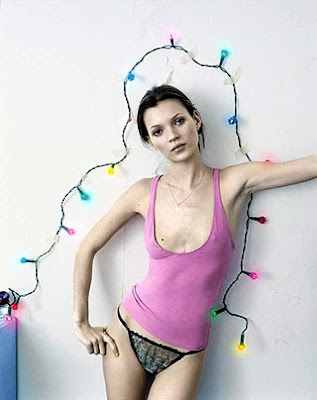 |
| Bruce Gilden |
Is Bruce Gilden a worthy Magnum photographer? His abrasive style of picture making appears to lack grace and subtlety, it is this 'style' that troubles me. The images are attention grabbing but often mixed with a sense of mockery at the people within his frame. The unforgiving use of flash which is cruel and harsh. Flash blur is an interesting technique in the right circumstances and is best used sparingly. Bruce was around many years before the industry took notice of him. Without losing faith or direction he persevered which is a recurring quality in successful photographers.
There is without doubt that sense of glimpsing a hidden world in Bruce's photographs that strikes a chord with Diane Arbus's work. This is a compliment for many photographers and I do not make the comparison lightly. One of his books is in my collection. 'Facing New York.' If you love the characters in that cosmopolitan city this book is a treat. The 'in yer face' style of Gilden's work brings a grotesque element just like Arbus. Click on the link to see what you think. Gilden's has limited technical skills but this limitation defines his work rather than detracting from it. Lisette Model is similar in her use of drama and urgency in street photography. The photographs that he took after the Haiti earthquake show a more sensitive side demonstrating a mature documentary style. Some photographers make a good living from producing stylised work that never really progress's technically. If you can do this you are fortunate in some respects but the ability to express yourself is restricted as a consequence. During my time I assisted many established photographers and the lighting would never change. The experience that I gained the most knowledge from was working with a still life photographer who always wanted to push the boundaries. This inquisitiveness which was both a technical and creative form of motivation kept us asking questions. Complacency is a photographer's biggest enemy.
Do you think that I am being unfair to Bruce Gilden? I would like to know what you think about his work. The aim of this piece is to bring greater awareness to this less well-known Magnum stalwart and to challenge my own views of what is good documentary photography.
 |
| Diane Arbus |
Do you think that I am being unfair to Bruce Gilden? I would like to know what you think about his work. The aim of this piece is to bring greater awareness to this less well-known Magnum stalwart and to challenge my own views of what is good documentary photography.
Lith printing and flash blur.
 |
| Nicholas Brewer |
I printed this a couple of weeks ago and is the first lith print I have made. The exposure was around ninety-seconds and five minutes at least in the dev tray. The dev was a strong mix but despite this it exhausted quickly. While it is not a fast process it is exciting. The lith reacts differently for each individual print and can add another dimension to the right image. The paper I used was Multigrade warm tone made by Ilford bought from Silver Print. The paper choice will affect your final result so consider your options before buying persihable material. Naturally the best place to see a lith print is in your hand looking at it in daylight.
The movement in the photograph is created with a technique called 'flash Blur.' I was using an external flashgun fixed to the camera and bracketing at about 1/8 of a second for the shutter. The moment the flash fired I jerked the camera to create the blurring behind the frozen sign. The great thing about it is the randomness of it. With the flash freezing the foreground you can be confident that this will look like it is meant to however; the background is a blur of merging shapes. As it is done in camera it is an exciting / anxious wait until the first contact sheets. It is a very different way of working from a digital camera. Bruce Gilden uses a lot of 'flash blur' in his work and you can see a small hint of it above. The second lady has a slight 'ghosting' behind her head.
Lith developers as originally conceived were designed to develop lith materials to a high contrast, with total elimination of half-tones, an important requirement of the then graphic arts industry. However the industry that used lith films & papers has gone the same way as video recorders and dinosaurs. The other use for lith developers is using them creatively, highly diluted with various papers for continuous tone printing with colour effects as demonstrated above. Click on Silver Print's link as they provide arrange of information about the history of photography and alternative process's that you may find interesting.
"Great photography is about depth of emotion not depth of field." Peter Adams.
How to care for your memory card -
"Great photography is about depth of emotion not depth of field." Peter Adams.
How to care for your memory card -



































